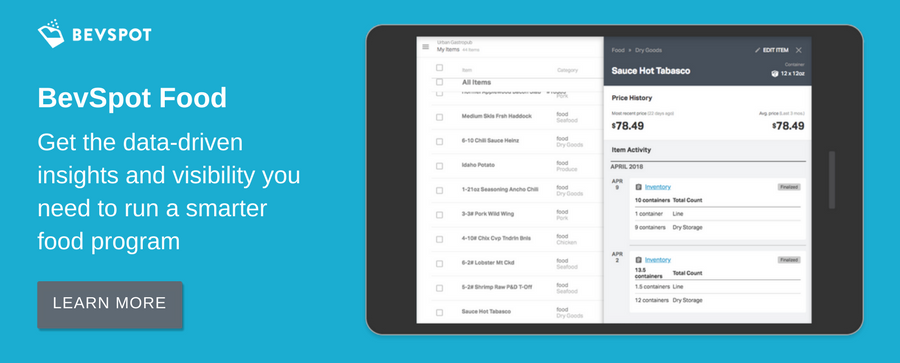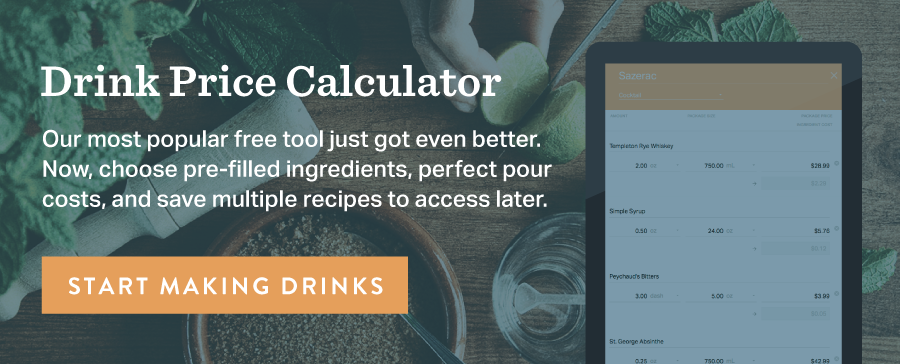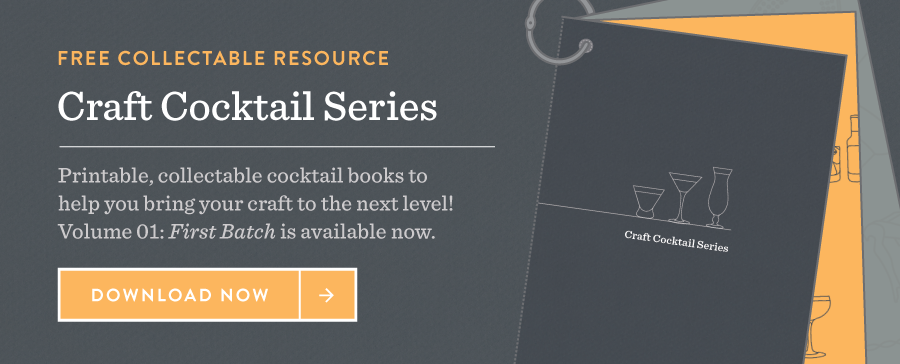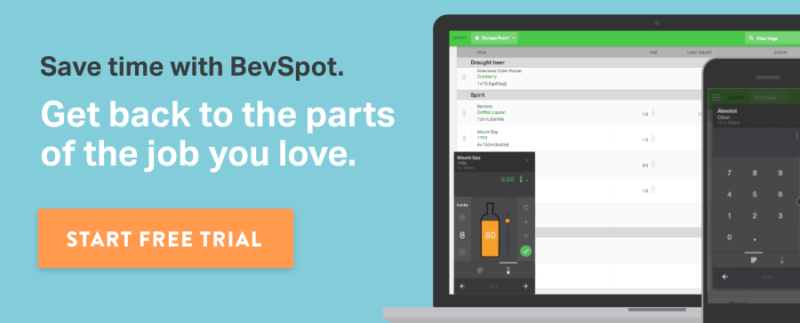A Smarter Way to Price Your Cocktails
Check it out Drink and Cocktail Pricing Tool
Determining the right price for a drink requires a little business savvy, a little arithmetic, and — perhaps most of all — time, especially when you’re working on pricing out a whole cocktail menu, or calculating costs for a complex drink that involves a lengthy list of esoteric ingredients. Making a mistake in either direction can potentially alienate your guests, or result in pouring money down the drain (literally).
Enter this nifty online drink-pricing tool from a tech company that’s working to help ease the pain of some of the more mind-numbing tasks that bartenders, managers and operators occasionally have to tend to. “Our goal is to help the industry by giving beautiful, easy software to do things they’re already doing on pen and paper,” explains Rory Crawford, CEO of BevSpot. “We also want to provide people with free services, and it’s fun and challenging for us to give people value immediately.”
Why Do I Keep Losing Bartenders After A Year?
Turn and burn.
There’s a phrase all of us in the service industry know well. You have to move fast and well to maximize your sales. It’s also a phrase I find accurately describes the way we move through service jobs. As a former hiring manager at an upscale urban gastropub, it was rare when I came across a resume where someone had stayed for longer than 2 years at any particular place. Those who had were often veterans of the industry: people going for 10+ years. I wondered if there were specific demographics I could pinpoint beyond my personal experience. So, I created a survey targeting bar managers and veterans and sent it through a small portal on Facebook.
Why Bartenders Quit
As I suspected, the main reasons for service workers changing their jobs are similar to the reasons many in all industries leave a company: better pay, better communication/management at new job, and more creative freedom/solo responsibility.
Most of the written responses (in the “other” category) communicated that it was a mixture of all three with some variance for personal relocation and harassment/retaliation.
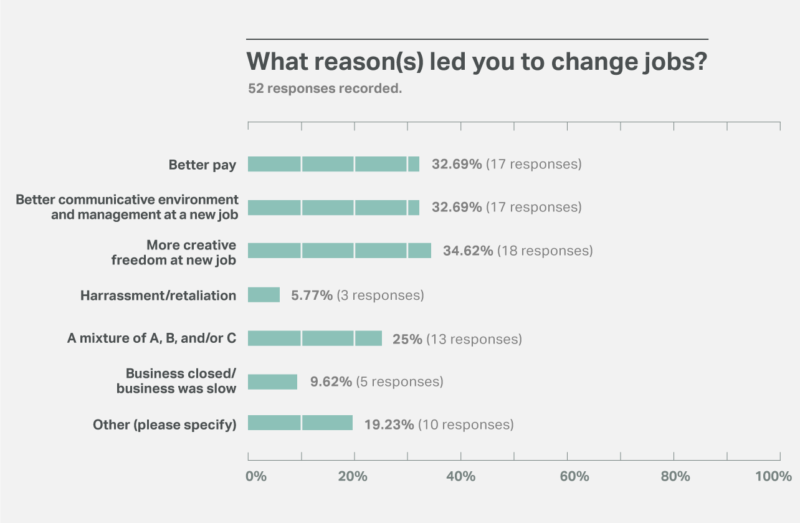
Some other takeaways from the survey:
- 70% of the respondents were veterans of the industry working 8+ years in the service industry with another 14% having worked between 5-8 years.
- 50% stayed 2-4 years at a job, 25% 4-8 years, with the rest falling mostly below 2 years.
- In all the written responses, nearly every single commenter mentioned communication failure with management and the need for a better pay structure.
- In a separate, required anonymous write-in response asking about a personal experience or thought on why the turnover is so frequent: 67% cited management/ownership communication issues or some kind of harassment, sexism being one of the main forms of harassment.
From Sara Kirpes, a manager and veteran of the industry:
“Always looking for the best you can get – better tips, better management, better clientele. But even more so, tending and serving are taxing physically and emotionally — if one is good at their job, they will cater to each customer’s needs, essentially putting everyone they interact with before themselves. It is a selfless job, and very often thankless. Anyone who works with the public as their primary job function knows that customer service is incredibly draining on oneself.”
Understanding the Pain Points of Service
We know part of the frustration felt within the service industry is the very real problem of how a person can work for 10+ years and develop their technique and knowledge, yet still only earn minimum wage and tips.
Inflation rises, but minimum wage doesn’t. Or rather, minimum wage doesn’t rise in an equally scalable form that allows for the same livability from prior minimum wage. Bartenders, servers, and other tipped wage earners seldom see a pay increase that takes care of that life uptick. Combine that with seldom well-taught management and owners without business acumen, and, boom, you have turnover galore. If you needed the data, and the opinion, there you have it.
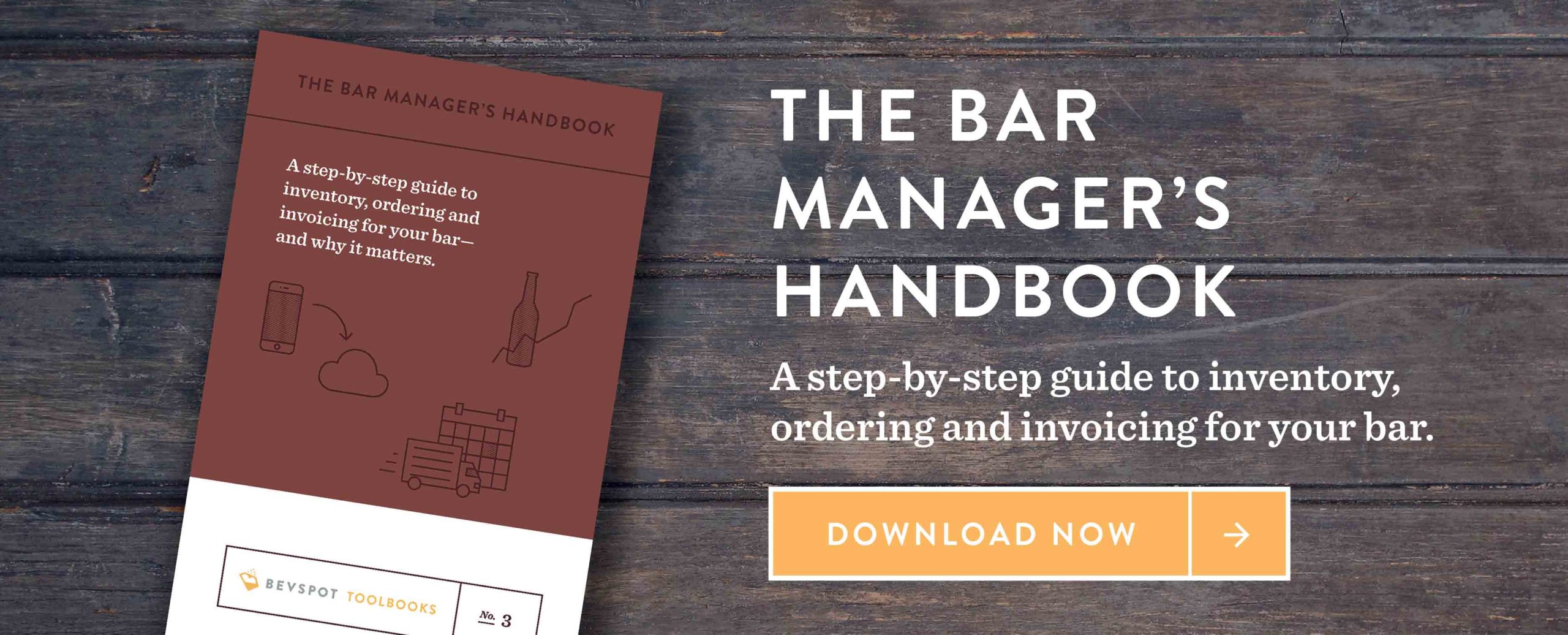
So, how do we fix the problems?
One big thing seems to work: good management and good management training
Good management and ownership is present where it counts: in the thick of things, asking questions and jumping in to help when someone is in the weeds. They ask and think. Good management is empowered and engaged, leading instead of criticizing. When I first landed in Boston, I spent some time observing Eastern Standard, The Hawthorne, and Island Creek Oyster Bar. I spent one evening doing an informational stage behind the Hawthorne where I encountered several staff members who have been working there for at least 3 years. All stated the program, management, and structure as reasons for their tenure.
I also spoke to Jackson Cannon and Jared Sadoian, Beverage Director and Assistant Beverage Director of Eastern Standard, The Hawthorne, and Island Creek Oyster Bar, respectively, and asked them about how all of the different businesses have such dedicated, long-term employees. Jackson Cannon helped pioneer the career advancement structure they have, and their particular training for all employees starting from the beginning of Eastern Standard.
“Everyone is included and there is always opportunity to grow within. We want our employees to learn at their own pace, however they want to grow in the company.”
Many employees, including Cannon and Sadoian, grew up through the ranks. Likewise, several bartenders have spent 7-8 years working at Eastern Standard. In an industry where 2 years is considered a long time, that’s legendary status right there.
At The Hawthorne, they have established a teaching program: employees get to taste product, are assigned homework, and are educated on history and technique so as to have a complete grasp on what’s going on behind their bar. To keep good staff from jumping ship, you have to create the environment that encourages and challenges an employee. Running a business means learning to care about the employees as much as one cares about the customers and money.
Keeping employees engaged
Having proper programs (shameless plug: like BevSpot) in place helps reduce inventory times and provide a training model for employees to understand the financials behind bar operations. To-do lists and organization are necessary to running one’s business and will provide structure for employees to learn and grow. Whether it’s a mise en place created for the front-of-house staff, or a program that makes inventory and ordering more efficient, these will help your management learn how to engage with employees outside of general procedure and encourage more personalized, professional learning.
Keeping staff interested and engaged is a big part employee retention. I’ve also learned when one’s staff is part of the financial side of the business, they’re more invested because they see just how much goes into running the restaurant/bar well. As much as you care about your business, you need your employees to feel cared for and care for where they work.
As our industry and society continues to realize the importance of empathetic, transparent communication, I can only hope to see more businesses running like Eastern Standard, The Hawthorne, and Island Creek Oyster Bar. It’s time for us to put our money into the people running our restaurants and bars.
Schedule 15mins to chat with a product specialist
Start a FREE Trial Today! BevSpot offers full product education and account setup for all customers! No card Information needed!
Annual Review: 2016 Bar & Restaurant Beverage Program Trends
Intro
2016 was an amazing year of growth for the BevSpot community. By the end of the year, our ordering and inventory platform was adopted by hundreds of bars and restaurants in 46 states and territories domestically, as well as in a few international markets.
In the process of this rapid expansion, we’ve amassed a significant amount of bar and restaurant industry data. This data has allowed us to examine demand for a variety of alcoholic beverage products and brands within the sole realm of the hospitality industry—excluding off-premises activity (e.g. grocery and liquor store sales) that is separate from bar and restaurant demand.
We’ve aggregated the year’s distributor order data to see what alcoholic beverages are selling the most on BevSpot.
We’ve also broken down the orders for beer, whiskey, vodka, tequila & mezcal, rum, and gin to see which brands have the highest market shares for these product categories.
Results
Can Alcohol Help to Cure Your Cold?
Our favorite pick-me-ups for the cold season.
Can alcohol cure a cold? Although most doctors today would never prescribe it, certain spirits were relied on for centuries to help address common cold symptoms, and there is in fact some truth that alcohol can offer benefits to those suffering wintertime coughs and congestion.
Aside from the obvious benefits of mood improvement, increased body warmth, and ease of falling asleep that typically come with responsible drinking, alcohol can help by dilating blood vessels, which aids mucous membranes in dealing with infection. It’s not that the alcohol “combats the virus” per se, but rather can offer your body some help in getting the job done.
Hot toddies are a popular go-to for many; it’s believed that warm steam coming off of hot liquid helps to clear nasal and throat passageways, just like chicken soup. A toddy technically consists of a spirit base, hot water, a form of sweetener, and spices, often incorporating whiskey or rum, honey, and lemon. The vitamin C in lemon and the throat-soothing effects of honey have been relied on for ages to relieve sore throat, congestion, stuffy nose, and other cold symptoms, and the alcohol provides a warm, soothing kick. BevSpot is the best in the business with helping optimize bar management, but today we look into remedies and recipes to use in cold season.
Start Your Free Trial With Bevspot Today!
The History of the Toddy
The origins of the toddy are a bit mysterious, especially since many countries have their own variations. The Manual states that the name “toddy” goes back to the British colonial era: a coopting of the Hindi word tārī , a drink made from fermented sap from the toddy palm that became very popular among British ex-pats.
The version of the toddy most often savored in America and made with whiskey is Scottish, of course; it was initially touted as a cold cure, but it was so delicious that it became a popular winter go-to even among the robust of health. One popular legend says that the name of the Scottish toddy developed because it used water from Tod’s Well in Edinburgh. When the recipe crossed the Atlantic to America back during the time period of the Revolutionary War, we made it our own by using homemade brandy or rum coming in from the Caribbean–basically, what was available at the time.
A toddy must be made with hot water in order to be considered a toddy, and ideally the mug it is to be poured into should first be rinsed with hot water to warm it up. The water dilution brings out the flavor of the spirit chosen, which could be just about anything. The final key component is the sweetener, which again could be selected from a wide variety of choices: honey, maple syrup, sugar, or more exotic options. Flavored liqueurs like hot apple brandy are also excellent sweeteners.
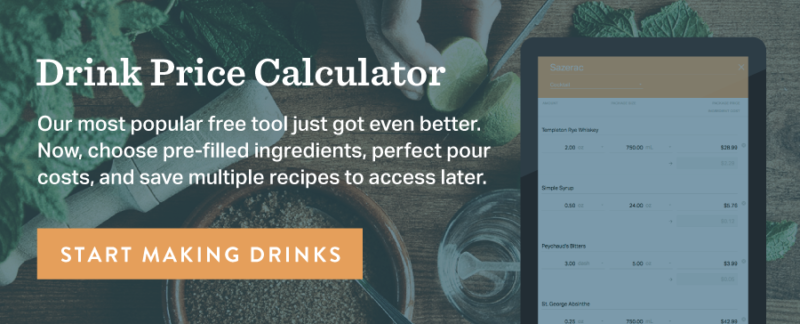
Beer Remedies?
Not one to be left out, beer is purported to have some cold-ameliorating effects of its own. A 2012 Japanese study isolated a chemical in hops, humulone, that helps to curb the respiratory syncytial virus, which causes similar symptoms to colds and flus. Unfortunately, the ingredient is only significantly effective if the individual has consumed 30 12-ounce cans of beer–a very unwise strategy that we’re confident will not help you to get well. So, it’s not a great cold remedy at this point in time. Consumed in moderate amounts, however, beer can have other health benefits such as increasing bone density, making hair and skin shinier, and reducing the risk of forms of dementia like Alzheimer’s, as well as heart disease.
A Word to the Wise on Fluid Intake and Responsible Consumption
While we’re discussing moderation, the common advice given to “drink plenty of fluids” changes when the fluid in question is alcohol. Like coffee and other diuretics, alcohol causes kidneys to release fluid faster than usual, which leads to dehydration and certainly does not help recovery. To prevent dehydration, flu cocktail enjoyers should make sure to simultaneously drink plenty of water or electrolyte beverages.
Alcohol can also mix badly with certain over-the-counter drugs or prescription medications and cause negative health effects, so you should always use caution before combining. When in doubt, check with your doctor!
Recipe Ideas
Naturally, we recommend anyone with a cold to stay home instead of going out to bars and sharing their illness with the world. However, the good thing about toddies and other cold-remedy drinks is that most are so tasty that you’ll enjoy them even when you’re not sick, and it’s certainly worth incorporating one or two variations onto a menu during winter months. Below are some recipe ideas so you can start. Stay well!
Recipe
Alex’s Irish Breakfast Toddy
I was first introduced to the “Hot Whiskey” on a rainy, cold day in a little seaside pub in Ireland, after a long soaking wet bike ride. The bartender suggested that this would cure what ails me before I even knew to ask for it—and now it’s my go-to on a sniffly day. The sweetness of the Jameson balances the malty flavors of a good Irish Breakfast Tea. Of course, you can make it with just about any black breakfast tea and any whiskey—this combo just feels a bit nostalgic to me. Sláinte!
Ingredients
- 1 ½ oz Jameson Irish Whiskey
- 1 tbsp honey
- ~8 oz boiling water
- 1 bag of Irish Breakfast Tea
- ~1 tsp lemon juice
- (Optional) Cinnamon stick
- (Optional) Lemon slice
- (Optional) 3-5 Whole cloves
Steps:
- Add heap of honey and whiskey to a mug, then add boiling water, leaving room for other ingredients and adjusting for taste.
- Stir until honey dissolves.
- Add tea bag and lemon juice and steep tea for about 5 mins.
- Optional: If you’re feeling fancy, add whole cinnamon stick and a lemon slice with whole cloves stuck into the lemon (so as to not have them floating around while drinking). If you add these, don’t add as much lemon juice.
Recipe
Trevor’s Captain’s Grog
I’ll use any excuse to whip up a tiki drink and being sick is definitely not an exception to the rule. The Captain’s Grog that I sourced from the great tiki cocktail book Smuggler’s Cove by Martin Cate is a great candidate. It features a couple types of citrus, almond/vanilla extract and maple syrup (that’s good for you, right?). Plus, it’s got a split base with three ¾ oz pours of different rums! The escapist nature of tiki is perfect for forgetting a cold and taking you a little closer to paradise.
~Trevor Driscoll
Ingredients
- ½ oz lime juice
- ½ oz grapefruit juice
- ½ oz maple syrup
- 3 drops vanilla extract
- 3 drops almost extract
- 1 oz seltzer water
- ½ oz John D. Taylor’s Velvet Falernum
- ½ oz Pierre Ferrand Dry Curaçao
- ¾ oz black blended rum
- ¾ oz blended lightly aged rum
- ¾ oz blended aged rum
- Mint spring garnish
steps:
- Add all the ingredients to a mixer tin.
- Fill with 12 oz of crushed ice and 4 to 6 “agitator” cubes.
- Flash blend and open pour with gated finish into a double old-fashioned glass.
- Add garnish.
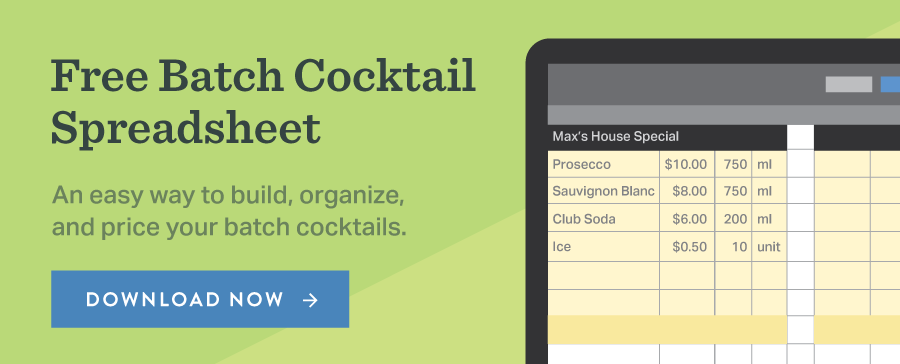
Schedule 15mins to chat with a product specialist
Start a FREE Trial Today! BevSpot offers full product education and account setup for all customers! No card Information needed!
Drawing the Perfect New Year’s Eve Crowd to Your Bar
Distinct challenges and opportunities await on the final and potentially biggest party night of the year.
And so it comes to this. New Year’s Eve. The year winds down and there is but one night left to make an impact. To truly shine. To do something unique. It may prove to be just as much or more work than any other night of the year. Here’s a few tips on how to make it shine.
The Staying Power of a New Year
When it comes to nights like Black Wednesday, the main goal is to manage chaos, keep everything flowing well, and making sure everyone is having a good time. People come in and enjoy themselves and leave relatively quickly, and managing flow is a key component. New Year’s, however, is different. Just ask Hamburg Brewing Company Manager Matt Piazza, “It’s the same amount of work [during] but it’s a lot more preparation [before]. We have two big events a year, the last one being our Anniversary party where we had 2200 people…this one we’re gonna be right around 100 so we get to fine tune a little bit more and make sure people really enjoy it.”
Black Wednesday, St. Patrick’s Day, and other big drinking days of the year have a nebulous party feeling. There is no certain time or schedule beyond what works for every individual or group that patronizes a place of business. On New Year’s, there is a concrete, defining, singular moment. For this reason, the crowd on New Year’s Eve is not likely to change over as often. It’s this slower moving yet just as excited crowd that allows prepared and ambitious bars to shine and kick off the new year with a bang.
Boosting Your New Year’s Numbers
Everyone from patrons to bar and restaurant owners are looking to have a good night on New Year’s Eve. As with Black Wednesday, there are a few common things every manager should do to make the night a success. Prepare the staff for a busy night. Lay in enough inventory. If they’ve run a party before, then compare notes to previous years. How much inventory do you need to stock? How was the staffing? Were there any complaints or parts of the night people particularly enjoyed? Studying from the past can prepare any establishment for the present.
Advertising is key for a successful New Year’s party as well. Let customers know what to expect, both in terms of costs and offerings. Let them know what the charge is, if any, to get in the door or reserve a table or if it goes by person or party. Let potential patrons know that reservation is required, or that walk-ins are welcome. Talk up the menu as well, especially any house specialties or new items. Take to social media, print ads, or local news and get out the word about everything from party highlights to requirements for entry and dress code if applicable.
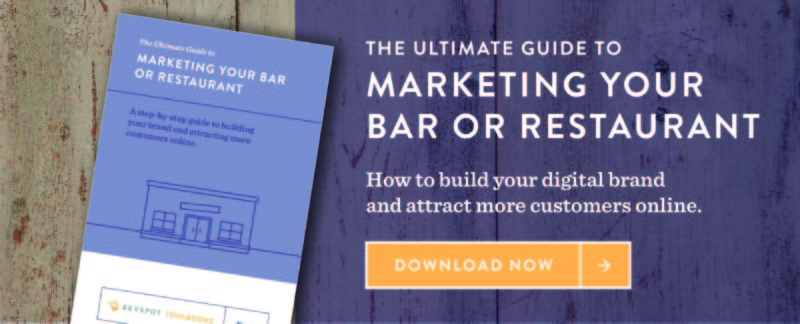
A prepared restaurant can also take advantages of the many different opportunities presented by New Year’s Eve. It’s a terrific chance to not only impress regular patrons but cement new ones as well. There is, of course, the tried and true method of impressing by running special promotions, from discounts on drinks and food to coupons good for a percentage off on a customer’s next visit. With patrons potentially leaving early in the night after the midnight countdown, timed discounts can be both another thing to look forward to as the countdown ticks toward midnight and a clever and easy way to keep patrons at any establishment later into the night to celebrate. Offering to work with a cab or ride-sharing service to get people home is yet another gesture not only sure to impress but sure to build good will with the crowd in making certain that New Year’s is both fun and safe.
It also helps to distinguish an owner’s establishment with events of their own. Giveaways, games, entertainment, all can bring in additional patrons and make the night a memorable experience, and should be advertised along with everything discussed above. Having said that, bringing out surprises the night of the event provides one more bang in a night filled with fireworks. Extra discounts, free commemorative goods, and lotteries for hourly prizes until the countdown at midnight liven up the festival atmosphere and keep people enjoying themselves throughout the night.
Seeing a Plan in Action
One such establishment taking full advantage of the night is the Hamburg Brewing Company in Western New York. Located out in the suburbs rather than in the city, they’ve seen a need and decided to fill it with aplomb. From Matt Piazza again, “I think the biggest thing for that night is there’s gonna be a lot of downtown stuff but not a lot for the Southtown people, we wanted it to be a little bit nicer of an event.” And so they’re hosting a party. With limited tickets, live music, contests, an open bar, and specialty house dishes HBC has taken the initiative and created what should be a singular night. With a building filled with fliers, a website with a detailed outline and ticket purchase lines, and an active social media presence, HBC is ready and prepared for their sell-out night.
New Year’s Eve is an event, and proper preparation can make the night a huge success. Local media will be looking for places to report the holiday from. Patrons will talk about the night they had. They’ll bring friends back for future visits. A well prepared bar can pull off both an incredible night to ring in the move from one year to another and garner wonderful publicity to start the new year off with a boost in traffic, free advertising, and prospects for new growth to start the year.

Schedule 15mins to chat with a product specialist
Start a FREE Trial Today! BevSpot offers full product education and account setup for all customers! No card Information needed!
6 Profitable Whiskey Cocktails, Ranked by Bar Pour Cost
6 Profitable Whiskey Cocktails
Especially the kind that reveals trends about the bar and restaurant industry. Our previous analyses of bar profitability data looked at our customers’ overall profitability metrics. We found that pour cost, the preferred measure of efficiency for beverage programs, is around 15% for spirits & cocktails; what you could draw from this conclusion is that before paying wages and rent, the median BevSpot bar is getting an 85% gross profit margin on their Moscow Mule.
Actually, in reality, that number turns out to be a bit off. The 15% aggregate pour cost measures general profitability for individual establishments, but it represents an average of all the various drinks being sold by those bars. Costs and pricing can vary widely between drinks, especially cocktails: the profit margin on a bar’s Negroni recipe almost certainly won’t be the same as that of an Old Fashioned.
Knowing the costs and profit margins of various recipes is critical for designing and pricing a successful drink menu. In a new running data series, we’ll be crunching these numbers for a range of common cocktails. To make comparing between drinks easy, we broke these recipes down based on the liquors that they contain.
To find the profit margins that BevSpot users are pricing into their menus, we compared their drinks’ list prices to their unit costs before adjustments for spillage and comped drinks. We also estimated the basic cost of each recipe by comparing users’ unit costs after those adjustments. Doing this allows cleaner comparisons between each cocktail on two metrics: typical profit margins, and typical unit pour costs.
We’ve taken a look at sales data from nine metro areas across the United States to see which popular cocktails are the most and least profitable for bars. Here’s what we found for six Profitable Whiskey Cocktails classics.
Schedule 15mins to chat with a product specialist
Start a FREE Trial Today! BevSpot offers full product education and account setup for all customers! No card Information needed!
How to Adjust Your Cocktail Menu for the Seasons
Great drinks aren’t always timeless.
You won’t get many orders for hot toddies in August or frozen margaritas in February. Why? It’s not just because no one wants a frozen cocktail during a blizzard. These popular cocktails include flavors and spirits that are popular during specific times of the year. While every bar program has to figure out what works best for them, it’s always a good idea to adapt your menu based on seasonal flavors. Here’s some examples of how to adjust your cocktail menu for the seasons.
Spring
- Popular spirits:
- Tequila
- Rum
- Gin
- Popular flavors:
- Fruity
- Floral
- Sweet
- Common drinks featured this time of year:
- Bee’s Knees
- Mojito
- Margarita
Summer
- Popular spirits:
- Tequila
- Rum
- Gin
- Popular flavors:
- Frozen
- Sour
- Crisp
- Common drinks featured this time of year:
- Pimm’s Cup
- Daiquiri
- French 75
Fall
- Popular spirits:
- Vodka
- Whiskey
- Popular flavors:
- Herbal
- Spicy
- Smokey
- Common drinks featured this time of year:
- Old Fashioned
- Negroni
- Manhattan
Winter
- Popular spirits:
- Vodka
- Whiskey
- Popular flavors:
- Hot
- Savory
- Bitter
- Common drinks featured this time of year:
- Hot Toddy
- Whiskey Sour
- Milk Punch
Fall and Winter Behind the Bar in New England
New England food and beverage establishments are in an ideal place for two major industry trends to play out: a focus both on locality and seasonality.
The region prides itself on a strong commitment to traditions at the table, in the market, and elsewhere. It also expresses each of the four seasons with picturesque variety, allowing for a varied procession of seasonal ingredients. These two considerations go hand in hand resulting in products that are borne from generations passed and champion the different flavors of the seasons.
Climate, Crop, and Cocktails
It’s easy to see all of this on our plates. Seasonal offerings find us eating fresh herbs and greens in the spring, wild berries in the summer, apples and cranberries in the fall, hearty root vegetables in the winter. In our glasses, however, an emphasis on seasonality and local tradition is not always as apparent. There might be margaritas in July and spiked hot chocolate in December, but these, despite being delicious, don’t appeal to the New England sensibility in the same way that a lobster roll bespeaks summer in Maine or cranberry sauce unavoidably recalls images of Thanksgiving dinner.
Seasonal drink offerings are all the more appealing when they are tied to the place where they are produced. New England produces amazing apple cider in the fall, pumpkin beers (love them or hate them) invade bar and liquor stores in late September, an array of stouts warm us through the winter. There’s a large customer base for all of these items, thus it’s somewhat of a necessity to feature them on every bar menu in town. But, as the food world has shown us, perhaps there are more ways to play with tradition and seasonal items within a bar program. New England, with its fortune as both a land of tradition and variety, is a great place to explore those possibilities in the hopes of adding new and exciting beers, cocktails, and other drinks to your menu.
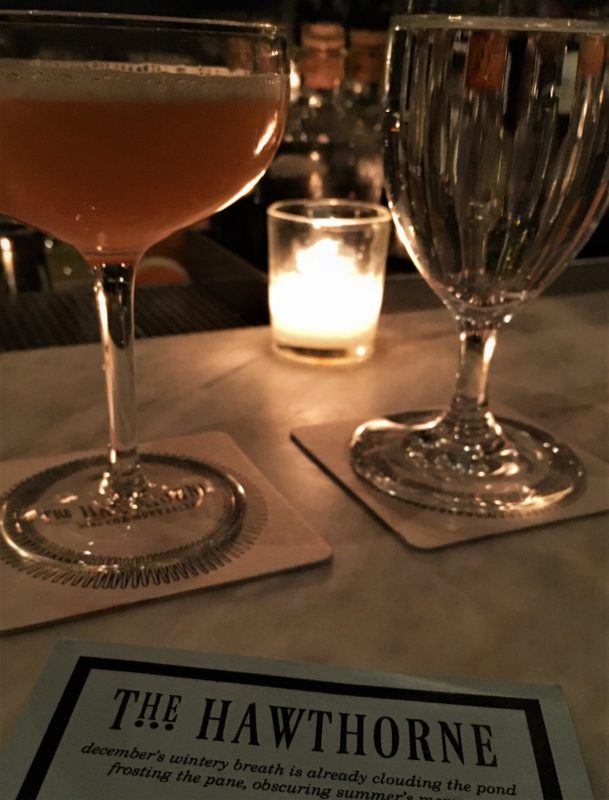
A Toast to the Seasons, Close to Home
One easy approach might be to start with a seasonal ingredient that is native to the area. This fall at The Hawthorne, a cozy and secretive (don’t try looking for a sign on their door) Boston venue with enthusiastic craft cocktail drinkers in mind, featured the “Orchard Smash”. Subtitled “how do you like them apples” to further identify the drink within Bostonian tradition, it’s made with Laird’s applejack as a base. The addition of cinnamon infused triple sec, while not an homage to locality, makes this drink reminiscent of home-baked apple pie, a staple of the region. The final product, in this case, is an original cocktail with hometown resonance.
If your bar tends to focus more on its beer program, you may look for options crafted with the same approach. Some of the more popular seasonal brews may a bit much for the customer who is still looking for that beer taste. You may want to carry something alongside (or other than) the intensely sweet ales that, for some, overstate an icon of the season. Consider Slumbrew of Somerville, MA, who always adds subtle and palatable limited-time beers to an already diverse lineup. This winter, they are again brewing a twist on a Belgian quad called the “Yankee Swap.” Brewed with maple syrup and fermented in oak rum barrels, this 12% ABV nod to the holiday packs a wallop but is jolly at heart.
Another approach to crafting a seasonal menu might be to riff on traditional seasonal drinks that are already tried and true. Take a classic winter warmer like the hot toddy. Despite its Scottish origins, there’s plenty you can do to make it speak New England. This is the approach they take at The Grill Room and Bar in Portland, ME, where they bolster their gluttonous upscale steakhouse menu with equally hard-hitting drinks. There you’ll find the Pimm’s Hot Toddy which uses combines Pimm’s (in lieu of whisky) with angostura, a clove-studded orange, cinnamon, and Vermont maple liqueur giving the winter favorite a distinctly New England air.
You might even take things one step further by using both locally sourced ingredients and locally distilled spirits. At Scales, which was recently added to chef-owner Dana Street’s locally renowned restaurant group as the newest hit in the Portland culinary scene, they’ve concocted a misleadingly-named cocktail called the “Bud Light.” Using barrel-aged maple syrup and Eight Bells Rum from nearby New England Distilling Co., the heavy bodied warmer is part of an entire menu that plays equally on seasonality and locality.
Your Bar in the New England Tradition
Ringing in a new season with your bar menus doesn’t require that you reinvent the wheel. In fact, in perfect New England fashion, it might be as easy as relying on tradition. That said, for a region so steeped in that tradition, local industry professionals—be they brewers, distillers, or bartenders—have proven to be successfully experimental and inventive.
Customers will surely celebrate the changes you make to reflect the change in season. For folks traveling to the area this season, these menu items serve as a sample of local flavor. For those who frequent your establishment, they can offer an exciting change and a bit of warm comfort in advance of cold months. As we progress into the holiday season, now’s as good a time as ever to push your bar’s emphasis on seasonal offerings with drinks inspired by home.

Schedule 15mins to chat with a product specialist
Start a FREE Trial Today! BevSpot offers full product education and account setup for all customers! No card Information needed!
In Buffalo, Craft Brewing Ties a Proud Past to a Promising Future
Buffalo has always been a unique town.
It’s well known for an abundance of snow and lost Super Bowls. It’s the City of Good Neighbors. It was once the manufacturing hub of the nation, and the eighth biggest city in the country. For a time, it was home to luminaries and cultural giants from Mark Twain to Nikola Tesla. Steeped as Buffalo is in history, the story of its beer and brewing scene is equally as fascinating, and the tradition carries on strong to this day.
A Quick Buffalo Drinking History
Going back more than 200 years, Buffalo’s first drinking establishment was opened in 1805 by William Hodge. It would be burned down by the British during the War of 1812 along with the rest of the city. Within a week, through the biting January cold, the town began to rebuild, with the reopening of its first bar and brewery a chief concern. In 1817 Buffalo would be chosen as the terminus of the Erie Canal, making Buffalo one of the early gates of westward expansion and prosperity with its completion in 1825. Within a few years hundreds of tons of whiskey and hundreds of thousands of wheat bushels would travel through the city, marking a rapid increase in drinking establishments.
By the late 1800s Buffalo would sport nearly 3,000 establishments where one could purchase beer and liquor—ballooning to 8,000 by 1922—serviced by nearly thirty local breweries. This is a feat made all the more impressive considering Prohibition had come into effect a full three years earlier. This was due in no small part to Buffalo electing a socialist brewmaster as Mayor and a booming, albeit illegal, brewing industry.
Buffalo History Inspires Buffalo Style
Today, Buffalo still has a lot of character: while the canal and steel plants are no longer fully operational, Buffalo is still a blue collar town that loves its beer, and all of the delicious food that goes with it. So much so that Scarborough Research named Buffalo the fourth biggest beer drinking town in America. Buffalo has naturally taken to the craft brewing movement like a duck to water, and finds influences all throughout our shared culture and history that go into the making of its local brews.
As Erik Greiner of Resurgence Brewing says…
“Buffalo’s craft beer scene is definitely on the rise. It has morphed from…the trendy new topic into a huge part of the Western New York community.”
Resurgence Brewing, a startup whose name is inspired by the rebirth of the city it brews in, offers a take on several local flavors. Their Loganberry Wit, a light, sweet, fruity offering, is an alcoholic design on a local drink of the same fruit flavor known for its sugary sweetness, and is a classic Buffalo favorite. Their Sponge Candy Stout offers a darker and more hearty brew made with clippings of a chocolate candy that melts in your mouth and provides a velvety caramel smoothness to an amazing stout that tastes like home.
Pearl St. Grill and Brewery—one of the oldest microbreweries in the city—features Saber’s Edge, a double IPA meant to “keep you warm during the hockey season.”
Local craft brewery Big Ditch Brewing Company is named after the Erie Canal, and sports a lineup of beers inspired by the project that helped shaped Buffalo history and culture for a century. From the Deep Cut Double IPA that pays tribute to the last seven hand dug miles of the canal to the Belgian Golden Shovel and Rye Brown Excavator, Big Ditch takes pride in keeping alive the spirit of the original canal workers, an identity Buffalo proudly carries to this day. In their own words, “As with the prosperity that followed the completion of the Canal, Buffalo today is a city reborn. And those who are shaping the next 100 years of prosperity are the ones we brew Big Ditch beer for.” In addition to the brews founded on the city’s heritage, its traditional flavors and foods find their way into the beer as well. Big Ditch for instance offers their world-class Hayburner wings, basted with their IPA of the same name.
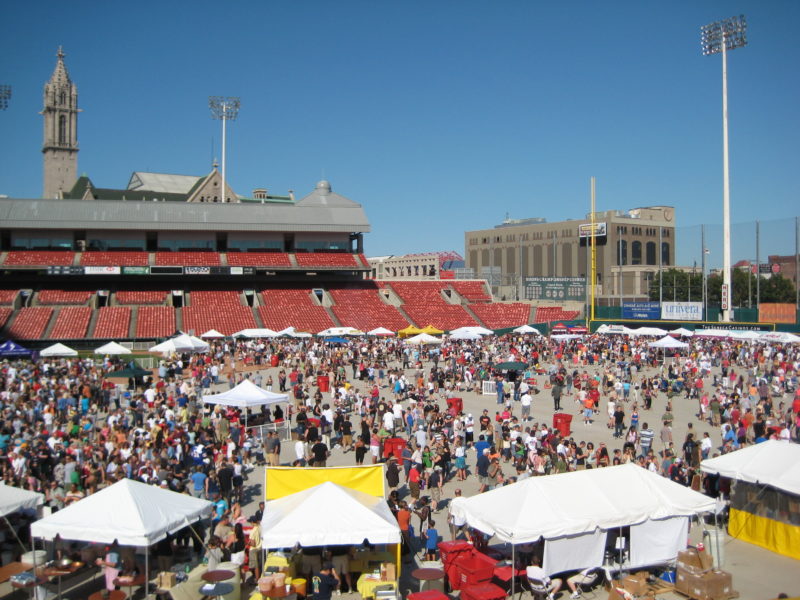
Local Highlights of Buffalo
If you come to visit Buffalo, you’ll find a town where the people are absolutely dedicated to their history, their food and drink, and to each other. From the wide array of collaborative brews and locally inspired beverages, to the signature flavors of loganberry, beef on weck, sponge candy, and the ubiquitous chicken wing.
Nearly every menu in town features not only a signature Buffalo dish or two, but a signature Buffalo brew as well. From humble food stands, shacks, and trucks that serve as part of the city’s resurgent waterfront, to high-end cultural mainstays like Chef’s, Buffalo’s restaurant scene is couched in dishes and drinks that were born right in town, or adapted with the signature style of the city. Visitors should expect to make time for a few of the top food and culture hotspots in the city, including:
Pearl Street Grill & Brewery – One of the oldest microbreweries in Buffalo and home to some of the best chicken wings in the world, Pearl Street is a cornerstone of the reborn waterfront. Within easy walking distance from the home of the Buffalo Sabres, the Buffalo Naval and Military Park, and several local concert venues, Pearl Street is a must-see for both locals and visitors alike.
Resurgence Brewing Company – A laid back establishment less than ten minutes from the world famous Anchor Bar, birthplace of the “Buffalo Wing.” With a great atmosphere, great beer, and a dog friendly location to boot, Resurgence is on every list of can’t miss stops in Nickel City.
Big Ditch Brewing Company – A beautiful building with incredible offerings from delicious drafts to custom wings and bar fare just blocks away from historic Shea’s Performing Arts Center and the Hotel Lafayette.
Shea’s Performing Arts Center – Newly restored and nestled among a half dozen smaller theatres, concert halls, and famous Western New York restaurants like the Buffalo Chophouse and Dinosaur Bar-B-Que, Shea’s is the beating heart of Buffalo’s theater district.
Duff’s Famous Wings – Serving their famous wings since the late 60’s to locals, out-of-towners, and even a United States President or two, Duff’s continues a near fifty year tradition of excellent food, excellent beer, and wings that will burn off your taste buds if you let them.
The Anchor Bar – The birthplace of the Buffalo chicken wing. Come for the world famous delicacy served as it was when it was invented in 1964. Stay for the atmosphere, live music, and true Buffalo hospitality.
In Buffalo, craft brewing isn’t just a tradition, it’s part of the rebirth of a city. Bringing new businesses and jobs, and a reimagining of old flavors, to a town on the rise, Buffalo’s craft brewing scene continues to be an integral part of the city’s history, culture, and identity.
The Effects of Unusual Bar Environments at Work
Most people have certain expectations when coming into a bar.
To drinkers, bars will often strive to separate themselves from the rest of the pack, whether it be through their offerings or the character of their environment. For new hires, they can create incentives through avenues for growth and freedom of personal expression at the bar. But what if a bar has to overcome something that already inherently separates them from the rest?
Meet Curio, a bar recently opened in Denver, CO by the trio of Katsumi Yuso Ruiz, Stephen Julia, and Stuart Jensen. Meet the Denver Central Market, the space they share alongside over 10 other vendors. Having been awarded use of the space’s liquor license, Curio serves cocktails, wine, and beer to all of the patrons of the market. Did I mention that Curio is open at 11:00am during the week and 10:00am during the weekend? (And they don’t serve food at all.) If you ask any bar professional, this is not a normal work environment.
There are many logistical challenges that Katsumi, Stephen, and Stuart faced just from the circumstances of their unique location inside the marketplace and their unusual hours of operation. For example, most of their bar staff would have a harsh adjustment to not having the morning to recover from the previous shift. This could undoubtedly cause friction for some of their staff. However, there are many smart ways that the owners tackled those problems.

Running Curio under an open management style, the co-owners work with the belief that all of the staff should have a clear understanding of the numbers and how the bar is doing. They also heavily emphasize staff training and encourage their bartenders to create drinks to add to the menu. This method generates a more in-depth product knowledge, greater personal investment from the staff into the establishment, and even helps to curb problems with turnover.
Another obstacle that came from their operating space was starting with a limited storage area for their inventory. They also understood that, with their operating hours, staff members wouldn’t have as much downtime to devote to tasks like inventory and ordering. Needing to get efficient with the limited man-hours, the owners looked to invest into BevSpot as a technology-based solution to make up for that lost time before opening Curio. BevSpot also served as a platform to further their goals of in-house staff development, offering free tools like the Drink Price Calculator for their staff to build and price their own drinks.
The lesson learned here is that being smart about your physical limitations and logistical challenges can pay dividends in achieving towards your goal with your establishment. With their ethical and effective management style and looking for innovative answers, Curio has been able to fully take advantage of their unique working environment and is in stride to become the world-class neighborhood spot in Denver that they strive to be. Check out their full BevSpot story and subscribe to the blog for more industry insights.

Schedule 15mins to chat with a product specialist
Start a FREE Trial Today! BevSpot offers full product education and account setup for all customers! No card Information needed!
The Unique Challenge of A Country Club’s Bar Program
Bars and restaurants might see country clubs and think they have it easy over there.
But, in some surprising ways, country clubs face challenges that restaurants would never have to consider. The distinct business model for private clubs often demands unusual operating models for their kitchen inventory and beverage programs. But how do these operating models work exactly and how do they differ from that of their restaurant kin? BevSpot investigated and came up with some interesting insights about country club bar programs.
The Club Member is King
One of the immediate differences that the bar managers run into at private clubs is the necessity of catering directly to the club member. Normal restaurants and bars will try and accommodate dietary restrictions or make slight adjustments to a meal in order to appease an individual guest. However, the menu is often set by the bar managers and the chefs and never really adjusted outside of their own personal decisions.
“At a private club, our [food and beverage] buying is dictated by our members,” says Tim Gallant, the Senior Food and Beverage Manager of the prestigious Oak Hill Country Club in Rochester, NY. “We have a specific set of clientele. Let’s say I have a Cabernet that I know 10 members are going to drink. It’s going to be on my list no matter what. There might be a hot trend towards a Riesling, but, if nobody in my club is willing to step out and try it, we just can’t. We have to honor and value what our members want.”
At the Westmoor Club in Nantucket, MA, we saw a greater emphasis on actively competing with nearby restaurants. This led to a need for a cocktail program and a head chef with a strong culinary background. However, Marc Ruemmler, the Beverage Manager at Westmoor Club, observes that members still have a lot of control over the menu.
“Some members just want their Dewar’s on the rocks. But it really depends on what club you work at.”
A Wider Margin for Profits
Something you’ll also sometimes see at country club bar programs is a much lower standard when it comes to food and beverage profit margins than you would normally expect at restaurants and bars. This is simply due to the culinary and beverage programs being a secondary income generator for these clubs and just an additional amenity to offer to members rather than the feature attraction.
At the Westmoor Club, which is actually a for-profit club with a board of electors, margins are much more important, even when considering special requests from their members. However, Marc still found a need to price aggressively against other restaurants on the island. “If I saw a wine on my menu at a restaurant in town, I made it a point to make it a dollar or two cheaper, because it shows that value to members coming into the club.”
Tim echoed this at Oak Hill. “In the suburbs, food and beverage tends to be budgeted to break even or lose money. For 90% of country clubs, the bread and butter comes from golf operations and member dues. I’ve seen club managers who are comfortable with a 50% margin, because they are competing with restaurants and want members to dine with them. It’s really just icing on the cake for some clubs.”
An Elevated Personal Touch
Another trend that we noticed within country clubs was an accentuated emphasis on a higher standard of personalized service for its members. Where your clientele pool is limited like it is at a private club, their happiness and satisfaction when visiting your club for a meal or a drink is all-important.
“Developing personalized relationships is key. It’s the only way you’re going to succeed. It develops a loyalty that you’re not going to be able to get at restaurants,” says Tim. “Being sat at a table because someone knows it’s your favorite table, getting your favorite drink, and getting your food specially made the way you like it, all without asking. That’s hospitality and that’s what we’re in the service of providing [at Oak Hill].”
Marc stressed this point at Westmoor as well. “The word ‘no’ just doesn’t exist in clubs. I’ve always told my employees when they come in that, if you don’t have an answer or don’t know how to do it, you ask somebody else and we try to make it happen no matter what. At most restaurants, outside of the high-end ones, I don’t see that happening.”
Breaking It Down
Despite a lack of emphasis on food and beverage in some private clubs, there are many avenues for improvements in their country club bar programs, especially in margins and profitability.
“Just because we can run 40% margins, it doesn’t mean we can let go of control levels in our beverage program. Product variance is still an issue. Theft is still an issue. That gets lost a lot of times at bigger clubs. We still have to be able to adjust for things like that,” Tim tells us. “It was the biggest reason why I had interest in picking up BevSpot at Black Rock and bringing it over to Oak Hill.”
Being able to back up his decision-making process with actual sales data when it came to buying decisions for your menu and pricing was a huge boon to Tim and he was able to discover marked improvements. Finding increased profitability by 15% at Black Rock and headed towards similar results at Oak Hill, Tim has found dividends when it comes to innovating his beverage program with real data.
Schedule 15mins to chat with a product specialist
Start a FREE Trial Today! BevSpot offers full product education and account setup for all customers! No card Information needed!
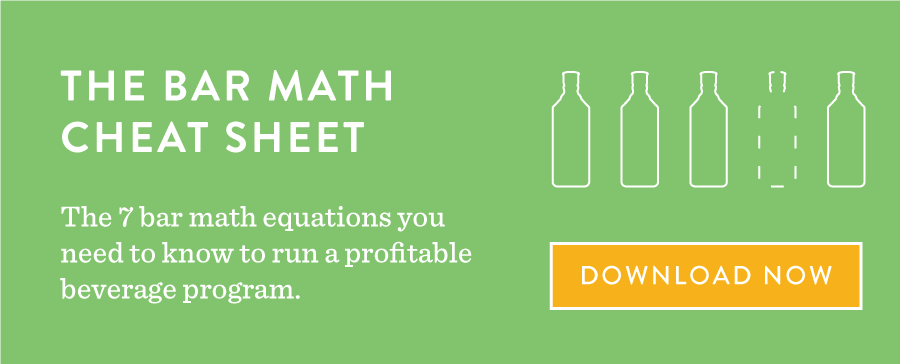
The 3 Types of Candidates Applying To Your Restaurant This Holiday Season
Background
As if the holidays weren’t already stressful, add hiring to the mix. The word itself makes many cringe. Holding on to staff and battling the ever-rising industry turnover rate (which is now at 72%) is hard, and many restaurateurs are hiring more hands to support their teams this month.
The holiday season brings with it new staff, guests, menus, and a whole lot of planning for 2022.
Once that “Help Wanted” sign is tacked on to your door (or website), resumes will be flying in. Here’s a quick breakdown of the types of candidates that will apply to work at your restaurant this December.
Applicants this holiday season will most likely fit into one of these three categories:
1. The College Kid Who Needs Money
This candidate wants to work as much as they can over their month-and-a-half break in order to save up for the spring semester. They’ll pick up any shift you give them and will be one of the hardest workers on your team. Just be ready for them to leave at the end of January! (But don’t worry—they’ll be back in the summer.)
2. The Seasonal Celebrity Shifter
This guy moves around the country picking up the coolest shifts in the most exotic locations. He’ll be in the Hamptons for the summer and your restaurant come winter. He knows how to make money—and he knows how to work. He won’t need much training, and he’ll add flair to your staff.
3. The First Timer
Oh yeah. We’ve all been one of these. This applicant is a high schooler trying to hold down their first job. They’ll come in while their mom watches cheerfully from the car. They’ll take some training, but remember, they’re an investment. If you train them and treat them right, it’ll pay off in spades. Schedule them on Tuesdays at 3 p.m. Come on, even your rock stars need a day off!
We all love being busy and watching those table turn. The hard part is keeping up with supply and demand. The holiday season brings huge spikes of customers, like on New Year’s Eve, and lulls, like on the day after Christmas.
It’s tough to gauge these highs and lows—that’s why BevSpot and Upserve are here to do it for you. Know what days will be the busiest at your restaurant so you can staff efficiently with Upserve and stay on top of your bar’s standing inventory and pour costs with BevSpot.
Schedule 15mins to chat with a product specialist
Start a FREE Trial Today! BevSpot offers full product education and account setup for all customers! No card Information needed!
Making the Most Out of Your Bar’s Well
(Photos courtesy of Jack Rose Dining Saloon and Greg Powers)
Every bar manager out there knows the struggle of constructing the perfect collection of well spirits, from the challenges of building a new well from scratch to cobbling together the well remnants left by a previous manager to doing a complete overhaul.
Building a well isn’t just a physical gathering of tools and spirits, but also an exercise in budgeting, pour cost analysis and ergonomics. Beyond the practical, an establishment’s choice in well spirits says a considerable amount about their values and taste level. In this two-part series, we explore the difficulties in building a well—and how to overcome them.
Part one of this article series will discuss the practical aspects of well building, from speed rack depth to pour cost to how bottles handle. Part two of this series will discuss the theoretical aspects of well building, from style and consistency to ethics and branding. Together, the articles focus on how to make service run more smoothly, effectively and stylishly.
Finding the Right Wells
The perfect well is never going to be the same well as another bar or restaurant’s, which may seem obvious but is necessary to state. We may all idolize the complex, gorgeous multi-well set up of Portland, OR’s Teardrop Lounge, or the seemingly endless bar of Jack Rose’s dining saloon room in Washington, DC, but to replicate them would surely be disastrous.
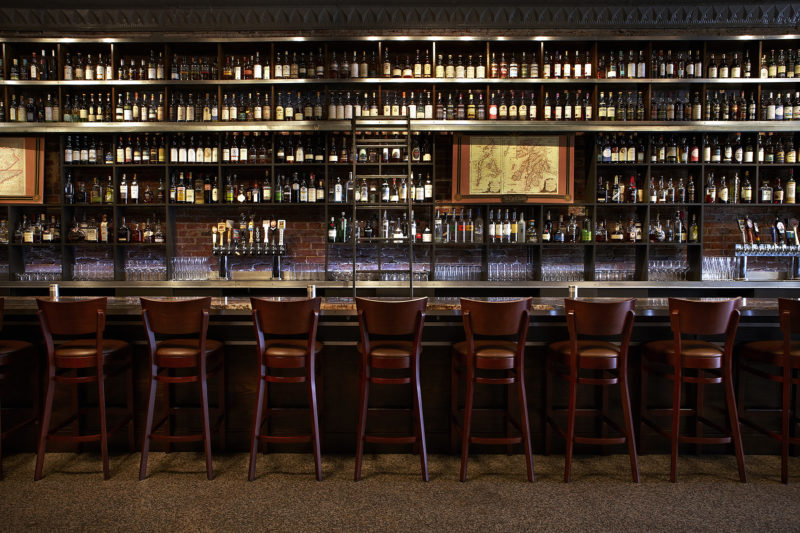
Teardrop Lounge and Jack Rose have smart, thoughtful wells, back bars and mise en place. It is not simply one aspect of each respective space that makes them shine—every aspect of these bars works in perfect tandem with each other. The creation of a thoughtful well is just one step toward running a successful bar program.
When creating, updating or overhauling a well, ask yourself these key questions:
What does my physical well look like?
- How many bartenders does this well comfortably accommodate?
- How many bottles can fit in my speed rack?
- Are all of the bottles in the speed rack, or are there alternative storage methods for some bottles, such as fridges, shelves, or back bar?
-
- Is this to my benefit?
-
- Is there a tap and drain to burn the well at the end of service, or do we have to scoop the ice out by hand to close the well?
- Is the glass rinser in an easily accessible location?
-
- What about the hand-washing sink?
-
- What about the glass-dump sink?
-
What do my physical bottles look like?
- Are all of my well spirits in sturdy, ergonomic bottles i.e. are they easy to grab, and hard to break?
-
- If not, can necessary liquids be transferred to smaller or easier to use bottles?
-
- What do these bottles say to the guests sitting at my bar?
-
- Have I considered the look of plastic versus glass bottles, especially for syrups and citrus?
-
- Are pour spouts properly aligned so that each bottle grabbed has its label facing the guest when pouring?
-
- If using smaller bottles or batching together cocktail ingredients, are all bottles labeled appropriately?
-
What does my pour cost look like?
- What percent pour cost am I aiming to hit across the board?
- Are there certain spirits I can buy less spendy versions of so as to subsidize specialty products, or a really special cocktail menu item?
- How am I tracking my pour cost?
By beginning to ask yourself these practical questions, facing the construction of a great well can be less daunting. Tune in to part two of this series to learn about taking your well set-up to the next level with questions that help you consider style, consistency and branding.
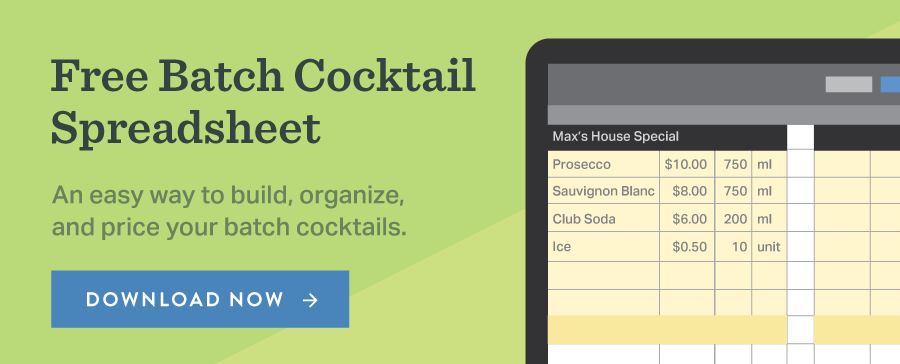
Optimizing Your Bar’s Wine Cellar and Liquor Room
As any barback will tell you, it can be a huge pain to have to dig through a messy liquor room or wine cellar to find that one bottle you need.
Experienced beverage directors and bar managers alike know how much a disorganized liquor room or wine cellar can gum up your operation. It means that your staff have to spend those precious extra minutes to find that wayward bottle you need on the floor. It means you have to spend those needless extra hours or even days making sure everything is in place when doing inventories and spot checks. But it doesn’t have to be that way.
Here’s some industry tips for optimizing your space and keeping your bottles organized:
Use Your Menu As a Map for Your Wine Cellar
An often missed opportunity for organization when considering your wine cellar is your own wine menu. You have already spent a lot of time figuring that out. Why not use that effort towards where your bottles are in your wine cellar? Carrie Nolan, a BevSpotter and former Beverage Manager for Barcelona Wine Bar, recommends to try using your wine menu as a wine cellar directory of sorts for your staff.
Your menu’s a great way to keep everyone on the same page as to where bottles can be found and should be stocked, even for those rookie barbacks. Wine menus are often ordered by varietal and the location of the winery. These provide great base lines of organization for your bar’s wine cellar.
Keep Your Liquor Room Shelves Organized and Labeled
Let’s face it, it can be easy for liquor rooms to devolve into pure disarray. There will always be a temptation to just throw bottles wherever they can fit on the shelf and call it a day, especially if you have to share the storage space with other supplies. But, cutting corners will just lead to a lot of headaches later like when your staff needs to find that a wayward bottle of Rittenhouse you need on the fly.
Keeping your shelves ordered and consistently labeled can keep that bottle where it needs to be. A common practice in liquor rooms is organizing by base liquor. You will also want to keep categorized items together (e.g. bitters, vermouth, sherry, sangria ingredients). And if you need to move things to make room on shelves for other supplies, make sure you and your staff are doing the due diligence and shift things over in full rather than moving a few bottles here and there.
Reap the Benefits of Optimized Organization
With a more organized storage space for your wine and/or liquor, it can unlock a lot of increased efficiency for different areas of your operations. For your ordering, whether you do it in bulk or lean, you can do it much more effectively with a neat storage area. It will make it that much quicker when you run through inventories as well. Ultimately, it will also mean you and the rest of your staff don’t have to spend those critical moments away from the floor.
A parting piece of advice that Carrie wanted to share was to make sure that, when you’re planning out the organization of your storage areas, the system you put in place makes sense to someone besides you. Make sure you don’t overlook how someone who doesn’t spend 40+ hours in your storage rooms will approach and look at your shelves.
For more bar management tips, keep it here at the BevSpot blog and subscribe below for the latest industry advice.
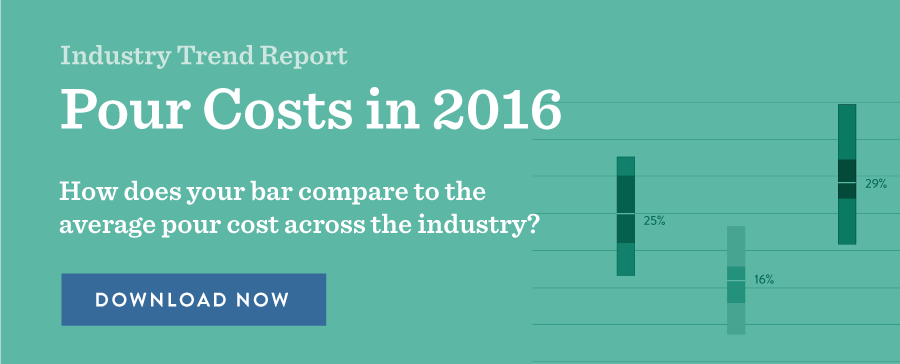
Improving Your Restaurant’s Coffee Can Improve Guest’s Experience
Some of our most memorable dining experiences are those where consistency has been presented to us throughout all points of service.
From atmosphere to guest interactions to the actual things that end up on our plates and in our cups, patrons have come to expect craftsmanship at every turn. Guests may sing praises of your decadent dinner items or your clever spin on a traditional cocktail, but how many times have you heard them remark about their end-of-meal coffee? Perhaps because specialty coffee has become the major focus of roasters and and daytime baristas, restaurant staff and guests have not come to expect high quality caffeine. Coffee, it often seems, is not really a part of the dining experience.
Beyond Caffeine: An Argument for Good Coffee
Coffee, justifiably, might not be a primary concern for menu designers. For one, despite its rich history, coffee is typically not a focus of culinary training. Thus, the ease and convenience of bulk-ordered coffee and a drip brewer can be enticing to any busy restaurant. There’s also the fact that not everyone orders it alongside their dessert course. Furthermore, restaurant coffee is purchased relatively far along in its production cycle compared to other ingredients in the kitchen or bar, as it’s been grown, harvested, dried, and roasted before it ends up in your brewer. So, it’s easy to think “just add hot water!” and call it a day.
However, consumers are becoming increasingly sensitive to gastronomic quality in every sense. For proof, think no further than the continued proliferation of craft products across the food and beverage industry. Recognizing the wide-spread interest in locality that is nearly essential in the craft industry, the best restaurants have made it standard practice to work with independent producers with whom they can share knowledge and resources in pursuit of consciously sourced and prepared products. If owners rely on, and have found success by partnering with independent brewers, distillers, farmers, and bakers, why not partner with the a quality roaster as well?
Cups of Excellence: Examples of Exceptional Coffee Programs Around Town
Some restaurants have begun to take this idea to heart. Their commitment to taking coffee as seriously as the rest of their menu has resonated with customers. The changes they’ve made range from managers simply revamping their coffee infrastructure to seeking coffee training to collaborating with coffee professionals. Here are some exciting practices already at work in the Boston area:
Front of house staff at Craigie on Main in Cambridge takes extra care to weigh out and hand pour each individual cup for guests. By purchasing wholesale from nationally-renowned Counter Culture Coffee, they source their beans just as mindfully as they prepare them.
At Loyal Nine a few miles down the road, employees have taken things one step further by making brewing a part of the customer experience. A trained barista wheels over various coffee-prepping materials on a cart—be it a Chemex, V60, or siphon—then brews each cup table-side and to order.
A handful of spots have started to take note of the intersectional potential that exist between the different parts of the food and beverage industry, and have begun integrating their operations permanently. Take Somerville’s Winter Hill Brewing for instance (note the double entendre in their name), which is run as a cafe during the morning and a brew pub in the evening.
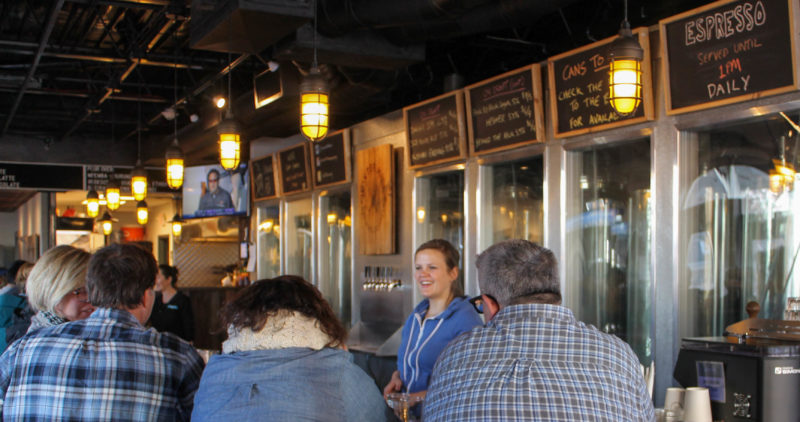
Similarly, Cambridge’s newly opened Lamplighter Brewing houses Longfellows, a daytime coffee house, in their taproom. These decisions not only extend the facility’s hours of operation; they also broaden each business’ customer base. Furthermore, as co-founder Cayla Marvil pointed out in a blog post about the collaboration, “there’s also some really cool things that can be done with coffee and beer…(Coffee Berliner Weisse anyone? Or how about a Cold-Brew/Imperial Stout “Shandy”?), and it’s going to be awesome to have the resources we need to experiment right at our front door.”
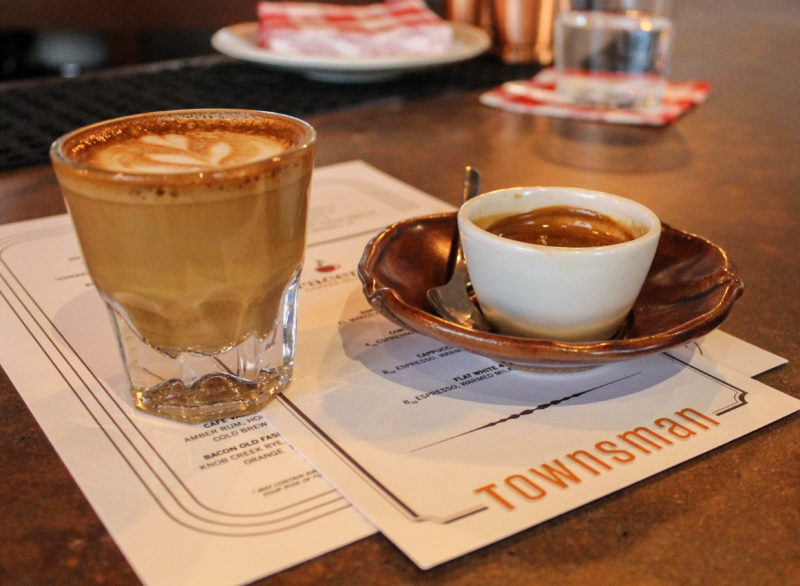
On the other side of the river, Townsman serves uniquely sourced and meticulously roasted Gracenote Coffee. Townsman’s Chef-Owner Matt Jennings justifies this decision thusly: “Of course the coffee program should be reflective of our overall ethos in the restaurant–ie. it is an continuation of the hospitality experience here–so [it’s] important to source products that we believe in.” When the companies became neighbors after Gracenote opened their cafe just across the street in Downtown Boston, they seized the opportunity to collaborate. Townsman has started operating a pop-up espresso bar in the restaurant, with coffee experts at the helm during brunch service. “A smash success from the start,” the partnership conflates and improves both the cafe and dining industries in a sense. “The end result,” as Jennings puts it, “is a tangible, flavorful memory.”
Brewing Better: How Your Bar or Restaurant Can End the Night on a High Note
By having a unique partnership with a specialty roaster, or by simply doing what’s necessary to send your guests off with an excellent cup of coffee, you give your restaurant the chance to round out a carefully curated and impressively balanced experience. Here are some steps you can consider to get there:
Upgrade your brewing equipment. And with that, learn how to properly use it! Making better coffee may be as easy as buying higher quality coffee, investing in a better grinder, or using a scale to make sure each cup/pot is brewed with consistency.
Go to a “cupping” at your local specialty roaster. As cafe’s get more invested in their product, they want to help improve the knowledge of their customer base as well. At cuppings, a barista will help you break down the tasting process, so that you can observe the nuances of coffee flavor. A number of roasters host these events regularly, so it’s easy to self-educate (not to mention the connections you can make across the service industry)!
Take a coffee course. Some larger roasters and coffee organizations offer training on a variety of topics, from brewing basics to espresso mechanics. They’re an excellent way to improve your knowledge quickly so that you can better educate your staff.
Schedule 15mins to chat with a product specialist
Start a FREE Trial Today! BevSpot offers full product education and account setup for all customers! No card Information needed!
BevSpot Booze News: The November Roundup
Here’s the third edition of Booze News. Let’s take a look at all the important bar and restaurant industry news from this month.
Reggie: Jon Snow can stop waiting and warning everyone. Winter is officially here and there was a nice bundle of contentious topics of discussion as well as some fine news articles this past month. Well, at least news outside of the scope of politics. Joining us for this month’s roundup is Alex who is substituting for Rachael.
Alex: Hey Reggie! Happy to fill in after Rachael’s sign off (we miss you already, Rachael!) Just warning readers, my perspective on the industry is heavily slanted towards beer and whiskey. Also, who is Jon Snow?
Reggie: You don’t know Jon Snow? I would totally jump into a deep dive for you, but I wouldn’t want to risk posting spoilers for all the other non-GoT viewers out there. Plus, it’s way off-topic, unless you count the release of some new wine.
Alex: Alright, we can’t ignore the biggest news of the month. Let’s talk about the election.
Trump’s Food Outlook
Reggie: Well, for better or for worse, it happened. We now live in a world with a Trump presidency incoming. Eater put together a comprehensive article covering all the nitty-gritty details of how Trump’s policies and attitudes could affect the food industry. It does a great job of covering topics that you might have overlooked, like Trump’s possible effect on organizations like SNAP and the FDA.
Alex: That article raises some great points, in a generally cautionary tone. But on a promising note for the industry, this election cycle also saw Maine’s Heather Sanborn—a co-owner of Rising Tide Brewery and President of the Maine Brewer’s Guild—elected to the House. Previously, she helped change Maine’s laws regarding brewery tasting rooms and her new position could prove to be a good thing for our sometimes slow-to-change industry. As the Brewer’s Association notes, “Legislators decide on issues that directly impact brewers such as taxes, tasting room sales, depreciation costs, and more.” I’m looking forward to tracking her political career.
Restaurant Employment Trends
Reggie: Another area that we’ll have to watch in the first months of Trump is how employment rates in the industry are affected. Nation’s Restaurant News put together an article covering recent trends they’ve seen in the industry.
Alex: The numbers in that article are really interesting. There’s been pretty steady growth in the restaurant industry since post-recession 2010, but hiring numbers are slowing. This could be because of rising labor costs due to wage increases, as we discussed in September. That’s definitely something to monitor under President-Elect Trump too.
Local Giants & Tax Rates
Alex: And not to harp on the negative, but hiring isn’t the only thing falling flat these days. I’m reminded of Bloomberg’s coverage about revenue decline at Boston Beer Company (makers of Sam Adams). The article notes Jim Koch’s testimony before a Senate committee about the country’s high corporate tax rate, saying that “he’ll probably be the last American owner of Boston Beer.”
Koch was talking about the difference between domestic and foreign tax rates— also something that Trump has spoken about changing extensively. This might be a bright spot under the new administration.
Who knew politics played such a big role in booze?
The Tall Tale of the Seelbach
Reggie: In some less heavy news, it turns out the believed origins of the Seelbach were completely false (as suspected by some). Adam Seger revealed his fabrication of the origin story and it received some notable coverage by the New York Times.
Alex: Classic! We should hire that guy to join our marketing team… (Kidding!) But there have been some positive examples of marketing around bars this month too…
Crafting Safe Spaces
Reggie: A movement that went viral in the bartending community was the “Ask for Angela” campaign. The Independent covered the efforts of the Lincolnshire Rape Crisis organization and their partnering with local bars to create a safe word of sorts for women caught in bad dates and feel unsafe.
Alex: This is awesome, an example of marketing at its best. Hopefully word will spread to the U.S.—do your part by sharing!
In the meantime (and not to discount the awesomeness of this campaign) the geek in me (hey, we are a tech company after all) feels the need to share this IFTTT solution to that problem.
The Best Trash Cocktails
Reggie: Finally, Tales put out a great article highlighting Trash Tiki, a platform started by two White Lyan bartenders, that focuses on crafting cocktails completely with sustainably generated ingredients.
Alex: Cool! I like to see more people focusing on reducing waste in any small ways they can—there’s so much in this industry. I hope we can make reducing waste more of a focus in our software in the future, we’re just starting to scratch the surface in bar operations now.
But I can’t let you get away with Trash Tikis without mentioning this article from the Guardian (even if it’s a few months old news). They profile a bunch of breweries that are doing things to reduce water usage, including one using NASA greywater recycling tech to brew! In a blind taste test, drinkers couldn’t tell the difference between the normal IPA and the one brewed with wastewater.
Hey, I warned you that I liked beer….
…
Reggie: And on that delightful note, we shall leave you until next month. Make sure to subscribe to the blog below to make sure you’re the first to know when the next edition of Booze News gets released. Cheers!

